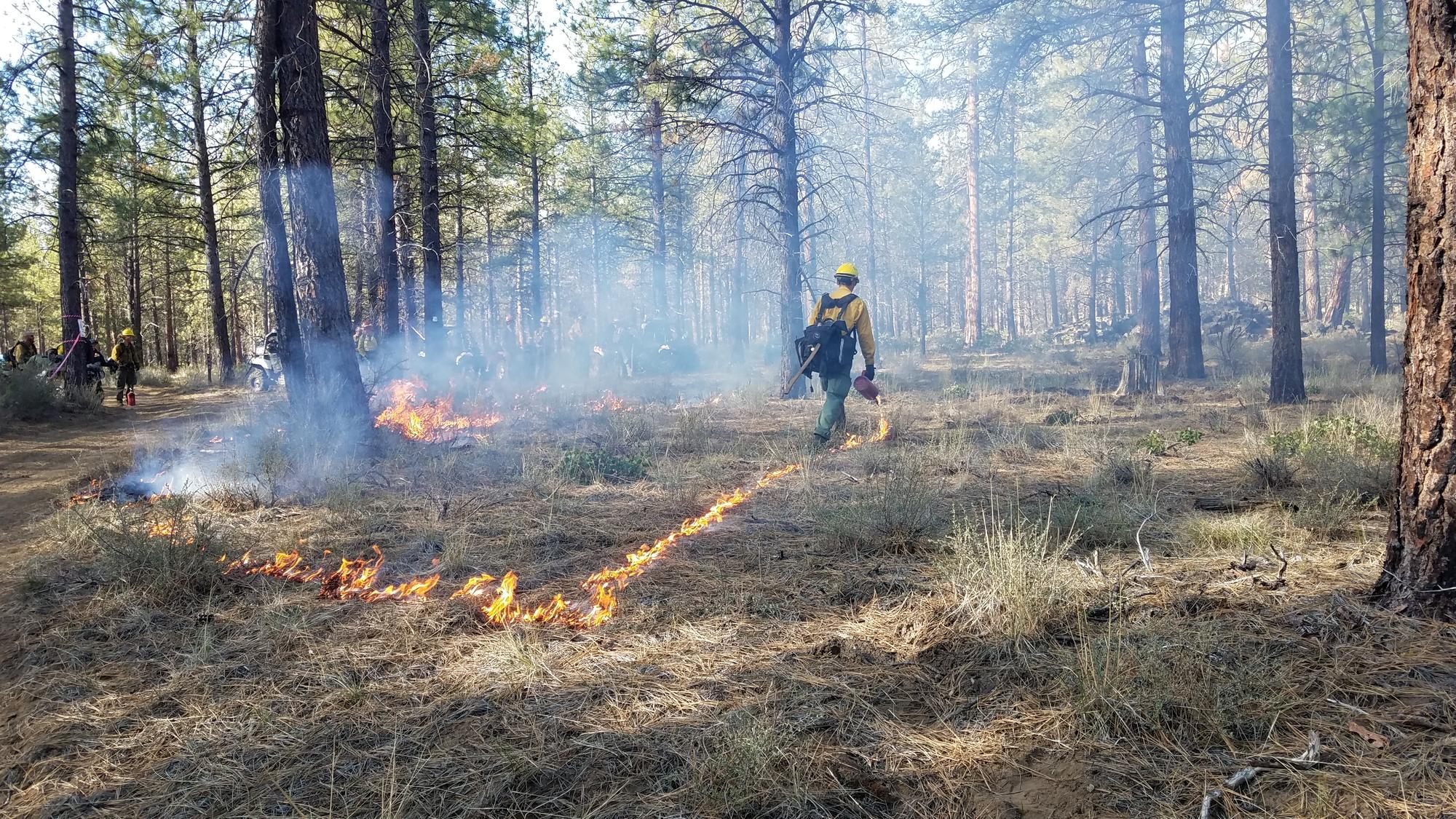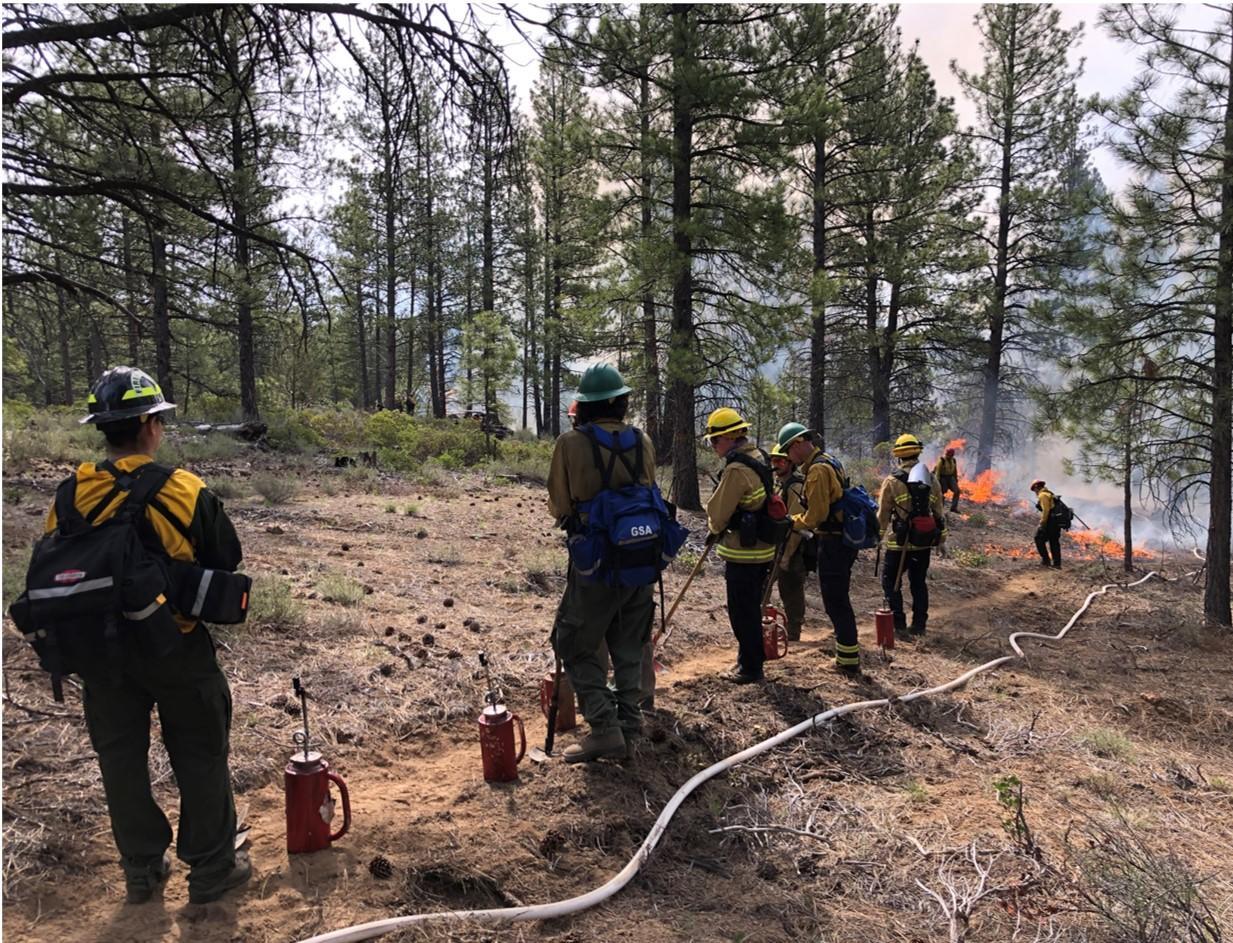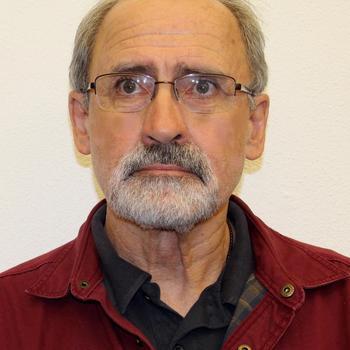A burn plan is a written document that helps the burn manager ensure a safe and effective prescribed burn. The burn plan’s essential function is to identify burn objectives and provide procedures to accomplish them safely.
A plan should be crafted well in advance of any burning. A burn plan may be written by a landowner, a burn planner or the burn boss. Most burn plans contain similar elements, but they may vary in the level of detail for each element. This includes gathering adequate equipment and personnel, properly preparing the site before the burn, and making sure that everyone involved understands the plan and is able to communicate it to neighbors and the public.
Site description
The first step is to collect information from satellite or aerial photos and maps that display topography and vegetation. This may include information on fires that occurred in the past. This helps to identify ecologically appropriate fire behavior, measurable objectives, and suitable weather and fuels conditions to accomplish the burn objectives.
A more detailed description of the area can include:
- The structure and composition of the vegetation, including the general size and species of trees, the amount and arrangement of understory shrubs, and ground fuels.
- Any specific resource concerns, including sensitive wildlife habitat, cultural or archaeological resources, and built infrastructure.
- Topographic features such as steepness of slopes, the primary aspect of the planned burn area, rock outcrops, drainages or other unique topographic features within the burn area.
- The location and status of established roads or trails, meadows or other open areas that may be used as anchor points for ignition, holding or safety zones for crews.
Landowners and managers tailor the burn plan to their broader goals. For example, they may focus on improving rangeland fire resilience, reducing the risk to homes from high-intensity fires or increasing the health of a forest stand. These broad goals (See Why We Burn, EM 9339) can be narrowed to specific, measurable objectives for a single burn. Objectives may relate to fire behavior — the rate of spread or flame length, for example. Other objectives relate to a fire’s effects — how many trees or shrubs are killed, or how much fuel is consumed (See The Ecological Effects of Fire, EM 9340). Typically, there is a desired range for these objectives rather than an exact number. Specific, measurable objectives allow you to evaluate the burn later. Collecting observations during the burn can allow for adjustments as ignition operations occur. Monitoring the effects after the burn creates more effective future burn plans and ensures post-fire restoration opportunities are addressed. These may include reseeding or other operations after the burn.
Example management goals and objectives for a prescribed burn
Improve rangeland fire resilience
- Reduce ground cover of invasive species by more than 95%
- Consume more than 70% of encroaching juniper stems
Minimize risk to nearby homes from a high-intensity fire
- Reduce cover of trees and shrubs under 15 feet by 50%
- Consume: 50%–90% of 1-hour fuels; 30%–70% of 10-hour fuels
- Keep flame lengths under 12 feet
Improve forest health
- Consume 20%–70% of small trees and understory shrubs
- Maintain three to five snags per acre for wildlife
- Limit mortality of legacy trees over 20 inches in diameter at breast height to less than 15%
The objectives should consider both the desired effects (reducing fuels, creating snags for wildlife) (See The Ecological Effects of Fire, EM 9340) and the undesirable effects (high mortality of leave trees). Once the objectives are identified, the prescription can help identify the right fuel moisture and weather conditions needed to conduct the burn effectively. This can also help with selecting the appropriate ignition method for meeting objectives.
Prescription parameters
The “prescription” is a set of predetermined, measurable criteria that defines conditions under which a prescribed fire may be safely implemented. These criteria typically describe the range of suitable conditions such as temperature, humidity, wind speed and fuel moisture. Other important parameters include availability of resources, firing patterns, potential impacts on sensitive smoke areas and other factors that will affect the success of the burn.
Weather
Temperature, relative humidity and wind speed all determine fire intensity, including flame length and rate of spread. Different vegetation types, topographic features and the amount of fuel in the unit will require different weather condition prescriptions. If the vegetation is highly flammable or fuel levels are high, then a more restrictive weather prescription would be appropriate to minimize risks. If the objective is complete consumption of the fuels, then the prescription might call for conditions that allow for more intense fire behavior (See Fire Behavior, EM 9341). It is also important to take note of the precipitation before, during and after the prescribed burn.
Fuel
Pay close attention to the amount of fuel (tons/acre or “fuel load”), fuel distribution and fuel moisture content. A prescription may call for specific levels of moisture in the fuels, including both live and dead vegetation. You may monitor these values in the days leading up to a burn to make sure they fit the prescription. Overly dry fuels may lead to excessive fire behavior, while fuels that contain too much moisture will not likely meet the objectives. In some cases, a prescription might target different moisture levels in different fuel sizes. For example, higher moisture in larger fuels such as logs and downed material could prevent them from igniting, while drier sticks and litter are consumed. This could help retain downed wood for wildlife habitat while consuming the finer fuels that contribute to increased fire risk. The prescription may also address specific ecological parameters needed to achieve success. For example, you may adjust the timing of the burn to accommodate the growth and reproductive cycles of specific vegetative and wildlife species of interest in a particular area.
Site preparation
Plan out the steps you will take before introducing prescribed fire on the ground. This might include spending time treating fuels and establishing or enhancing control lines to ensure that the fire stays within the burn unit perimeter.
Fuel treatments
Managing fuels inside the unit prior to the burn should focus on moderating fire behavior on the burn day. The treatments serve to:
- Reduce the height or density of understory fuels.
- Thin the overstory trees to create space between tree canopies.
- Concentrate heavy fuels, slash and thinned brush in piles.
- Break up the continuity of fuels across the burn area.
It is important to address any materials that create the risk of a fire escaping the burn unit. These include large concentrations of fuels next to the edge of the burn boundary or snags that could ignite and start a fire across the control lines.
To meet burning objectives, it may be necessary to consider the protection of desired “leave trees.” These are trees identified in advance that will not be burned, such as snags used by wildlife. Treatments to protect the remaining trees can include:
- Removing ladder fuels by pruning lower tree branches to reduce the likelihood of a surface fire moving into the canopy.
- Removing and pulling slash, litter and other fuels away from the base of sensitive trees.
- Using low-intensity ignitions around the base of desirable leave trees.
Control lines
In a prescribed fire, the control line is a constructed or natural fire barrier used to contain fire.
A fireline is a containment or control line that removes fuel down to mineral soil. Firelines can be installed with hand tools, bulldozers or tractors with brush rakes or discs. Mineral soil firelines are often used when other features such as roads are not available to act as a containment line.
A wetline is a line of water that is sprayed along the ground and serves as a temporary control line when working in a low-intensity fire situation — for example, where grass is the primary fuel type.
A blackline is created by the pre-burning of fuels inside the burn unit along the fireline. The blackline is generally the widest break in fuels between the active fire and adjacent unburned fuels.
Prior to the burn, you can connect hose lay to a water source, such as a tanker or engine, to supplement a fireline or blackline.
Ignition, holding and mop-up plans
Ignition plan
Once the prescription has been set, it is time to decide how the burn will be conducted (See Managing a Prescribed Burn, EM 9344). This includes determining the appropriate number of people and resources needed for carrying out the burn. The ignition plan will consider the sequence and pattern of ignition operations under the anticipated conditions. On the day of the burn, carry out a test fire to ensure that fire behavior falls within the acceptable conditions. Once you determine the fire can proceed, the ignition team coordinates with the burn boss to ensure the observed fire behavior is within the prescription. Throughout the ignition stage, you can adjust the firing plan to achieve the desired results. For example, in an area where the actual fire behavior is creating a situation that calls for reduced fire intensity, the ignition team may be able to make a quick adjustment from a strip-ignition pattern to a dot-ignition pattern to maintain their progress.
The ignition plan also will need to account for how to operate near fire-sensitive areas, such as near cultural resource sites or adjacent to important infrastructure needing protection. It is also important to consider any adjustments needed for burning near sensitive plant or animal species as well as aquatic habitats.
Holding plan
Prescribed burn plans address the personnel and resources needed to keep the fire within the burn area. The holding team will have specific instructions to ensure that the fire remains within control lines. As in the case of the ignition plan, adjustments are made as needed throughout the burn so that flame lengths and rate of spread stay within the objectives of the burn.
Mop-up plan
After the burn is completed, the mop-up phase ensures that fire cannot spread outside the control lines. Mop-up activities vary from being sure all fire is out within a distance of the control lines to completely putting out the fire throughout the burn area. The mop-up plan will detail how far into the unit all smoke should be extinguished after the burn is completed, the personnel assigned to patrol, and the frequency and duration of patrols.
Smoke management
When planning a prescribed burn, it’s important to address smoke concerns. Smoke management should focus dispersal of smoke by noting the predominant wind direction, atmospheric conditions, type and amount of fuel, and ignition techniques used (See Smoke Management, EM 9342). Identify and list the smoke-sensitive areas near the burn unit and understand the effect the burn will have on the surrounding neighbors, infrastructure and public. Oregon has a Smoke Management Plan and a State Implementation Plan for Air Quality. Landowners and practitioners must secure a permit and adhere to the rules when carrying out a prescribed burn.
Safety and contingency plans
The burn plan also outlines how everyone participating in the prescribed fire will conduct operations safely. Safety issues to focus on before the burn is conducted include:
- Identifying locations of safety zones and escape routes.
- Reviewing potential hazards with the crew.
- Discussing medical protocols and crew members with first-aid training.
- Communicating the location of well-stocked first-aid kits.
- Reviewing the plan of action if smoke becomes a problem on roads.
- Conveying proper practices for safe and effective communication.
Contingency and escape plan
The plan should focus on the unexpected events or conditions that could result in the prescribed fire escaping control lines. While it is rare for prescribed fires to escape, it is important to have a thorough plan prepared in case this does happen. This includes knowing about potential contingency lines such as roads or natural fire breaks where the fire could be controlled and what contingency resources are available. Define the circumstances under which the escape would be declared a wildfire, so that it is clear when to bring in more resources.
Notifications
Each plan should identify the individuals and agencies to be notified prior to the burn. Use a wide variety of methods: phone calls, social media postings and large posters or notices at strategic locations. Notify neighbors and the public well in advance and again within a few days of proposed burns. In addition, include a list of essential contacts and phone numbers for the day of the burn in the burn plan.
Legal requirements
It is the responsibility of the landowner or operator to understand all the legal requirements associated with prescribed burns. These include state and local laws, rules and policies.
Check with the local fire department or the Oregon Department of Forestry when conducting prescribed burn operations.
Acknowledgments
This publication is part of a series that was developed by the Forestry and Natural Resources Extension Fire Program. The program would like to acknowledge contributions from Emily Jane Davis, Fire Program director and associate professor; and Katie Wollstein, range wildland fire specialist.








